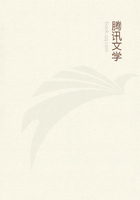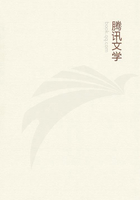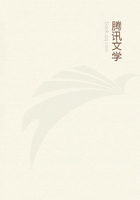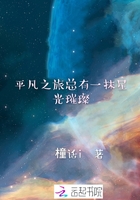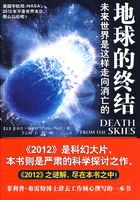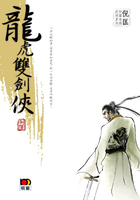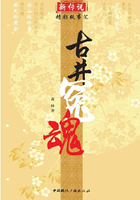One or two special points in the work may be referred to as illustrating his method. He undertook first the movements of the heart, a task so truly arduous and so full of difficulties that he was almost tempted to think with Fracastorius that "the movement of the heart was only to be comprehended by God." But after many difficulties he made the following statements: first, that the heart is erected and raises itself up into an apex, and at this time strikes against the breast and the pulse is felt externally; secondly, that it is contracted every-way, but more so at the sides; and thirdly, that grasped in the hand it was felt to become harder at the time of its motion; from all of which actions Harvey drew the very natural conclusion that the activity of the heart consisted in a contraction of its fibres by which it expelled the blood from the ventricles. These were the first four fundamental facts which really opened the way for the discovery of the circulation, as it did away with the belief that the heart in its motion attracts blood into the ventricles, stating on the contrary that by its contraction it expelled the blood and only received it during its period of repose or relaxation. Then he proceeded to study the action of the arteries and showed that their period of diastole, or expansion, corresponded with the systole, or contraction, of the heart, and that the arterial pulse follows the force, frequency and rhythm of the ventricle and is, in fact, dependent upon it. Here was another new fact: that the pulsation in the arteries was nothing else than the impulse of the blood within them. Chapter IV, in which he describes the movements of the auricles and ventricles, is a model of accurate description, to which little has since been added. It is interesting to note that he mentions what is probably auricular fibrillation. He says: "After the heart had ceased pulsating an undulation or palpitation remained in the blood itself which was contained in the right auricle, this being observed so long as it was imbued with heat and spirit." He recognized too the importance of the auricles as the first to move and the last to die. The accuracy and vividness of Harvey's description of the motion of the heart have been appreciated by generations of physiologists. Having grasped this first essential fact, that the heart was an organ for the propulsion of blood, he takes up in Chapters VI and VII the question of the conveyance of the blood from the right side of the heart to the left. Galen had already insisted that some blood passed from the right ventricle to the lungs--enough for their nutrition; but Harvey points out, with Colombo, that from the arrangement of the valves there could be no other view than that with each impulse of the heart blood passes from the right ventricle to the lungs and so to the left side of the heart. How it passed through the lungs was a problem: probably by a continuous transudation. In Chapters VIII and IX he deals with the amount of blood passing through the heart from the veins to the arteries. Let me quote here what he says, as it is of cardinal import:
"But what remains to be said upon the quantity and source of the blood which thus passes, is of a character so novel and unheard of that I not only fear injury to myself from the envy of a few, but I tremble lest I have mankind at large for my enemies, so much doth wont and custom become a second nature. Doctrine once sown strikes deeply its root, and respect for antiquity influences all men. Still the die is cast, and my trust is in my love of truth, and the candour of cultivated minds."[28] Then he goes on to say:
[28] William Harvey: Exercitatio Anatomica de Motu Cordis et Sanguinis in Animalibus, Francofurti, 1628, G. Moreton's facsimile reprint and translation, Canterbury, 1894, p. 48.
I began to think whether there might not be A MOVEMENT, AS IT
WERE, IN A CIRCLE. Now this I afterwards found to be true; and I finally saw that the blood, forced by the action of the left ventricle into the arteries, was distributed to the body at large, and its several parts, in the same manner as it is sent through the lungs, impelled by the right ventricle into the pulmonary artery, and that it then passed through the veins and along the vena cava, and so round to the left ventricle in the manner already indicated."[29]
[29] Ibid. p. 49.
The experiments dealing with the transmission of blood in the veins are very accurate, and he uses the old experiment that Fabricius had employed to show the valves, to demonstrate that the blood in the veins flows towards the heart. For the first time a proper explanation of the action of the valves is given.
Harvey had no appreciation of how the arteries and veins communicated with each other. Galen, you may remember, recognized that there were anastomoses, but Harvey preferred the idea of filtration.
The "De Motu Cordis" constitutes a unique piece of work in the history of medicine. Nothing of the same type had appeared before. It is a thoroughly sensible, scientific study of a definite problem, the solution of which was arrived at through the combination of accurate observation and ingenious experiment.
Much misunderstanding has arisen in connection with Harvey's discovery of the circulation of the blood. He did not discover that the blood moved,--that was known to Aristotle and to Galen, from both of whom I have given quotations which indicate clearly that they knew of its movement,--but at the time of Harvey not a single anatomist had escaped from the domination of Galen's views. Both Servetus and Colombo knew of the pulmonary circulation, which was described by the former in very accurate terms. Cesalpinus, a great name in anatomy and botany, for whom is claimed the discovery of the circulation, only expressed the accepted doctrines in the following oft-quoted phrase:

